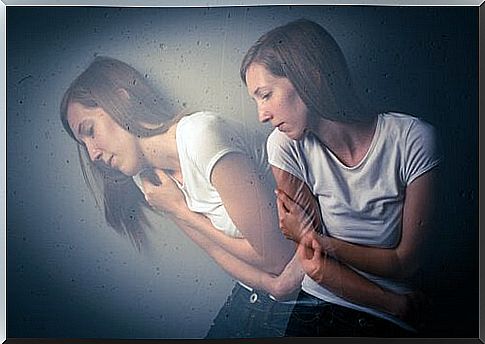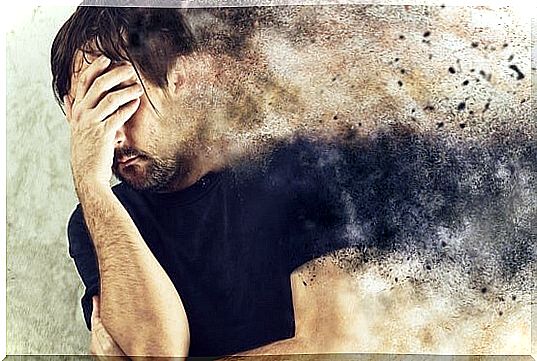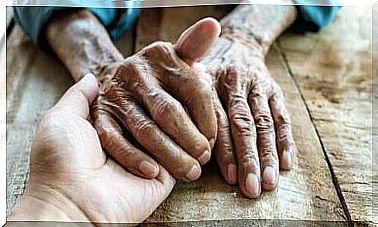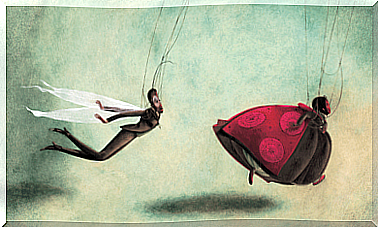Do You Know The Difference Between Pathological Anxiety And Adaptive Anxiety?

It is important to know that there is pathological anxiety, or dysfunctional, and adaptive anxiety or considered “normal”. And this is important to know because many and often think that all types of anxiety are negative.
In general terms, anxiety is defined as the emotional state that anticipates harm or misfortune. In other words, it occurs when someone thinks something bad will happen, so it is associated with worry. It manifests as emotional distress, something like a mixture of fear, restlessness and nervousness. Also through physical symptoms, such as palpitations, nausea, dizziness, etc.
In adaptive anxiety, the expected harm is a real probability. For example, when we know that we will be late for work and we expect, then, to be reprimanded for it. In pathological anxiety, on the other hand, there is emotional distress in the face of future damage that is possible, but not probable. It also becomes a more or less permanent state. In other words, something bad is constantly expected to happen to us.

The role of anxiety
Adaptive anxiety is an evolutionary mechanism. Their role is to protect us to ensure our integrity and our survival. When there is a real threat , both the body and the mind must prepare to face it. If they didn’t, a great feeling of helplessness would appear when facing danger. Anxiety, then, serves positive purposes.
Pathological anxiety occurs when the person feels incapable of facing a threat and, at the same time, perceives situations that are not really threatening as threatening. When this happens persistently, you enter a state of distress. In this one, you can’t even know what you are afraid of. You are simply afraid of “something” that might happen.
Anxiety states generate many physiological changes in the body. The human being needs some organs to be in a position to work (heart, lungs, kidneys, etc.) at great intensity to face the threat of a threat. In this way, if anxiety is experienced very frequently, the usual thing is that it also ends up altering the normal work of the body and leads us to become ill.
Characteristics of pathological anxiety
Whoever suffers from pathological anxiety has a serious problem. It’s not enough to just pat her on the shoulder and tell her that everything is going to be okay, even if it helps. Getting out of that state requires much more than the goodwill of others.
The first thing, to begin to untangle the skein, is to know if what one has can be classified as pathological anxiety. To find out, it is necessary to examine whether the tension that is experienced meets the following characteristics:
- Frequency and intensity. In pathological anxiety there are frequent episodes of anxiety, which are almost always prolonged and experienced with high intensity. In adaptive anxiety, on the other hand, the episodes are infrequent, pass quickly and are not as intense.
- Answer. In pathological anxiety there are disproportionate responses to the stimulus, real or fictitious, that causes this state. For example, when you are afraid that thieves will break into your house and then you spend the night awake making sure that this does not happen.
- Suffering experience. When anxiety is pathological, it is experienced as deep suffering that does not stop. In adaptive anxiety, suffering is temporary and does not leave traces.
- Functionality. Pathological anxiety affects the normal development of daily life. It prevents action, or leads to action, in such a way that the routine is altered or limited, based on a confused fear.

Why does anxiety become pathological?
Actually, the answer to this question could fill several books. However, to facilitate the exposition, we could summarize by saying that behind this type of anxiety there is an unresolved trauma. Sometimes the relationship between trauma and anxiety is direct, but sometimes it is not.
If someone, for example, is in a car accident, they are likely to leave traces. The usual thing is that the victim of this accident feels anxiety every time they have to move around in a car, or even when walking down an avenue. In this case, the relationship between trauma and anxiety is direct, although disproportionate if we consider the real probability of threat.
In other cases, the trauma that gives rise to pathological anxiety may be covert, or inhibited in the unconscious. A rejection or abuse at an early age may be the cause. Even a thought or wish that is experienced could give rise to a strong shock in the individual.

Therefore, pathological anxiety is a condition in which the person normally requires external help to be able to get ahead. The most advisable thing is to carry out a psychotherapy or psychoanalysis to solve this problem.









